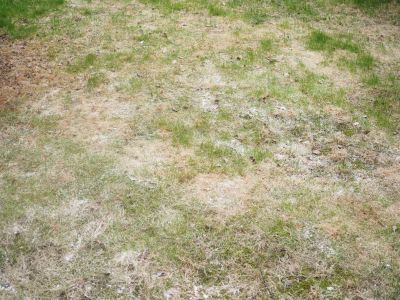Treating Powdery Mildew on Grass
When your grass has white powder, fungicides for powdery mildew treatment do a good job of temporarily eliminating the symptoms, but the disease returns if the growing conditions don’t improve. Grass is a sun-loving plant that grows best in open locations with good air circulation and plenty of light. Powdery mildew grass disease takes hold in shady locations with little air movement. Watering late in the evening, so that the grass doesn’t have time to dry before nightfall, further encourages this disease. Control powdery mildew in lawns by opening up the area to better air movement and more sunlight. To reduce shade, prune or remove trees and shrubs that shade the grass. If this isn’t possible, consider the advantages of covering the area with attractive mulch instead of struggling to grow grass in a difficult area. The area under a tree is perfect for a mulch-covered shady retreat with garden seating and potted shade plants.
Tips to Control Powdery Mildew in Lawns
You can discourage powdery mildew on grass with a few cultural practices aimed at keeping the grass healthy in shady areas, but these methods are only effective in light or partial shade.
Reduce the amount of nitrogen fertilizer that you use in shady areas. Grass grown in shade doesn’t use as much nitrogen as grass grown in sun. Water shaded grass infrequently, but deeply. The soil should absorb the water to a depth of 6 to 8 inches (15 to 20.5 cm.). Water the lawn early in the day so that the grass has time to dry completely before nightfall. Allow the grass in shady areas to grow a little taller than the rest of the lawn. Wait until the blades are about 3 inches (7.5 cm.) tall before mowing. Overseed the existing grass with a shade grass mixture.
Take steps to treat powdery mildew as soon as you discover that your grass has white powder symptoms. If the powdery mildew grass disease is allowed to progress too long, it can spread and result in dead patches in the lawn.
